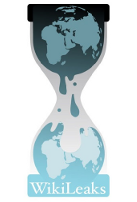Cablegate on African broadband: 2007 (Ghana, Kenya, Ethiopia)
Quite a few WikiLeaks cables deal with the behind-the-scenes of African broadband affairs. Using CablegateSearch.net we have listed the “juiciest” cables (if African broadband can be described as such), below. The U.S. was very interested in broadband, most notably ownership of the SEACOM fiber-optic cable and competing with Chinese investment.
Next up are four cables from 2007. The main themes are Ghana’s ICT initiatives, Kenyan fiber projects (which will succeed – SEACOM, TEAMS, or EASSy?), and fiber investment in Ethiopia (via U.S. or China?) :
Ghana
- Summary: As of 2006-7, Ghana has multiple ICT projects underway that should vault the nation into a regional leader. Further privatization is needed, as is rural connectivity, but mobile growth and ICT training facilities look promising.
- U.S. viewpoint: Ghana’s ICT sector is promising but faces challenges in privatization, regulatory gaps, power supply, and general business climate. Government projects should have positive results for the private sector.
Notes:
- 60% of investment in ICT has failed since 1992.
- ICT contributed 6% to the GDP in 2005 versus 1.8% in 2000.
- In 2003, >50% of fixed lines were in the Accra area. Only 10% of the Ghanaian population lives here.
- Four mobile operators all offer broadband as of 2006.
- Internet cafes charge US $0.45 – $1.60 per hour.
- Ghana is extending an existing 600km fiber optic cable ring connecting Accra, Tema, Kumasi, and Takoradi.
- Broadband over power-line was explored.
- E-government, m-banking and e-agriculture initiatives were discussed.
- Run-down of 7 education initiatives.
- Link: Ghana’s ICT Development: Is The Glass Half Full?, October 11, 2007
Kenya
- Summary: Numerous (3 or 4) fiber-optic services are ready to undergo construction. Last-mile solutions are not far behind.
- U.S. viewpoint: High-speed broadband will allow East Africa to connect with opportunities for job growth and a global marketplace starting in 18 months. The upside is enormous.
Notes:
- SEACOM expects their undersea cable to be live by March 2009. (was eventually July 2009)
- The perception of progress on EASSy is a distraction that has caused potential customers to delay in committing to SEACOM.
- Link: Kenya And East Africa: A Step Closer To Fiber Optic Connectivity, August 13, 2007
Ethiopia
- Summary: Ethiopia plans on purchasing 14,000km of fiber cable from China. Negotiations to connect via Djibouti have been flat for 3 years.
- U.S. viewpoint (adopted from Ethiopian Minister’s comments): Ethiopia needs approximately ten years to transform its ICT sector. There is debate whether to use Chinese or American companies as examples or investors. State-owned ETC must lower rates in order to accelerate development.
Notes:
- A massive US $158 million project will bring fiber transmission backbone, mobile services in 9 cities, plus hundreds of thousands of wireless phone lines. The goal of completition is September 2007.
- Plans are in the works to connect to cables in Kenya, Sudan, and Djibouti.
- Ethiopia needs major human capital over the next 5-8 years.
- The ICT Minister has traveled to India, Egypt, and China. He has plans to visit Silicon Valley.
- Link: Ethiopia: Laying Groundwork For Development Through Fiber Optics, May 3, 2007
Kenya
- Summary: U.S. firms, along with Kenya, are racing to give East and Southern Africa broadband connectivity to the rest of the world. SEACOM look to be completed within two years.
- U.S. viewpoint: Kenya must decide whether it will merge with SEACOM or go ahead with its TEAMS cable. Additionally, the U.S. strongly favors the SEACOM cable over TEAMS or EASSy, writing how, “the good news is twofold: first, that at least one of the three cables is moving towards fruition; and second, that the current frontrunner will be owned, managed, and built by U.S. companies.”
Notes:
- Payment and signed contracts have secured SEACOM in the global queue of fiber cables.
- The government of Kenya has promised an operational fiber system by 2008. They may feel that TEAMS can be completed before SEACOM due to its shorter length.
- Some feel that EASSy’s monpolistic ownership structure will preclude cheap bandwidth delivery, and even if it success there, it may not return profits given the competition with SEACOM.
- Link: U.S. Companies In Lead To Bring Fiber Optic Connectivity To East And Southern Africa, April 20, 2007
Tentative Post Schedule:
9/8/11: (2009) Kenya, Zambia, Ethiopia
9/9/11: South Africa, Nigeria, Tanzania
9/10/11: Tunisia, Kenya, South Africa
9/12/11: (2008) Senegal, South Africa, Uganda
9/14/11: (2007) Ethiopia, Rwanda, Kenya
9/19/11: Ghana, Kenya, Ethiopia, Kenya













 Twitter
Twitter Facebook
Facebook Pinterest
Pinterest